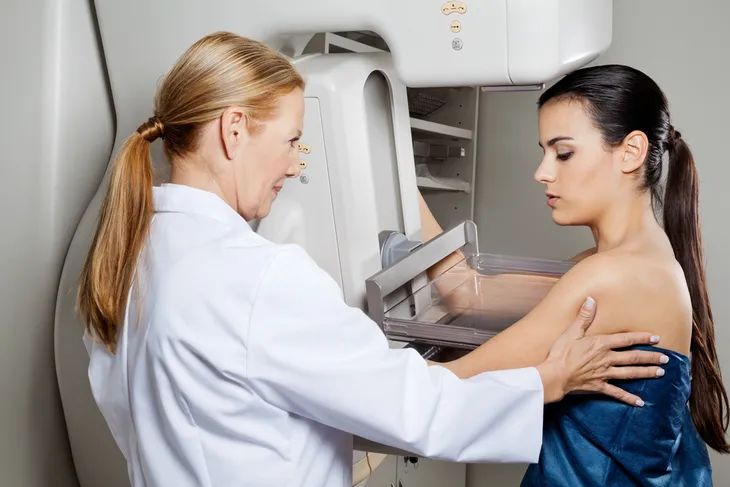Most of us have been affected by cancer in some way or another, whether it be personally or through someone we know. Breast cancer is no different. It’s the most commonly diagnosed cancer in the United States. This cancer forms in the cells of the breasts and while it’s most often commonly associated with women, it can affect men too.
Get informed with these important must-know life-saving metastatic breast cancer facts…
What Does Metastatic Mean?
Metastatic (pronounced like met-ah-STA-tic) breast cancer refers to stage 4 breast cancer, which originates in the breast, but spreads as cancer cells break away from the primary breast tumor and take root and grow in different parts of the body—typically the bones, and major organs like the liver, lungs and brain.
How Common Is It?
Approximately 155,000 people in the United States are currently diagnosed and living with metastatic breast cancer. The disease is responsible for an estimated 42,000 deaths in the U.S. on an annual basis. About 6-percent of women have metastatic disease at the time of diagnosis of breast cancer.
What is the Mortality Rate?
The majority of American deaths aren’t caused by the initial cancer of the breast—they occur years later when the cancer returns and spreads to a major organ, such as the brain, lungs, liver, or takes root in the bones. The chance a woman will die from breast cancer is 1 in 38 or 2.6-percent.
Who Gets It?
Metastatic breast cancer doesn’t target anyone in the population more than others according to gender or age. In fact, both men and women, young and elderly are regularly diagnosed with metastatic breast cancer. Metastatic disease has more to do with how long the period has had cancer — the longer it goes without diagnosis, the higher the chance of metastatic disease. The goal of early diagnosis is to prevent metastasis.
How Does it Spread?
Breast cancer spreads, or metastasizes, by entering the bloodstream or lymphatic system and then spreads to other body parts such as the lungs, bone or brain. According to Healthline there are several ways cancer can spread in the body. The first is direct invasion which happens when the cancer spreads to a nearby organ in the body. Cancer cells will take root and grow in this new area, says the source.
The second is lymphangitic spread which occurs “when cancer travels through the lymphatic system. Breast cancer often involves the nearby lymph nodes, so the cancer can enter the lymph circulatory system and take hold in different parts of the body,” writes Healthline. Lastly, there is hematogenous spread which is similar to lymphangitic spread, but instead of moving through the lymph circulatory system it moves through the blood vessels. “The cancer cells travel through the body and take root in remote areas and organs.”
Early Detection is Important
Early detection is important for the survival of metastatic breast cancer. Even when caught early, survivors must be vigilant with regular check-ups with your doctor and mammograms as most cases of metastatic breast reoccur 10 or 15 years after the original diagnosis, treatment, and remission (but this depends upon stage of initial diagnosis).
What’s the Survival Rate?
Metastatic breast cancer does not guarantee death. The initial breast tumor hardly ever causes a fatality. Death is more likely to occur once cancerous cells metastasize and spread from the breast to a vital organ. Five year survival rate once these is metastasis is 27-percent.
Physical Exam
As mentioned, treatment for metastatic breast cancer is essential to ensure the cancer doesn’t reoccur. Doctors recommend that metastatic breast cancer survivors undergo a physical exam and a review of symptoms with your primary doctor every 6 months for the first 2 to 5 years following successful treatment. Physical exams can then be reduced to once per year from then on. Annual mammograms are encouraged every year for the rest of your life.
What are the Treatment Options?
The treatment options for metastatic breast cancer depend on a number of individualistic medical factors, including:
- Breast tumor features or type
- Location of the metastases
- Size of the metastases
- Extent of metastasis within the body
- The patient’s age
- Current health—including symptoms, other conditions, and past cancer treatments
Is Surgery an Option?
Surgery is rarely used to treat metastatic breast cancer due to the spreading fashion of the cancer cells, which makes them hard to remove surgically. The most common treatments for metastatic breast cancer include:
Radiation therapy—recommended for symptom and relief as well as to reduce the tumor size, particularly in cases of bone metastases.
Hormone therapy—is recommended to shrink tumors in women patients with positive hormone receptors (ER+).
Chemotherapy— is only prescribed when the patient isn’t suited for hormone therapy. Chemotherapy works to kill cancer cells and reduce tumor size, and to prevent the spread of cancer cells to other parts of the body.













